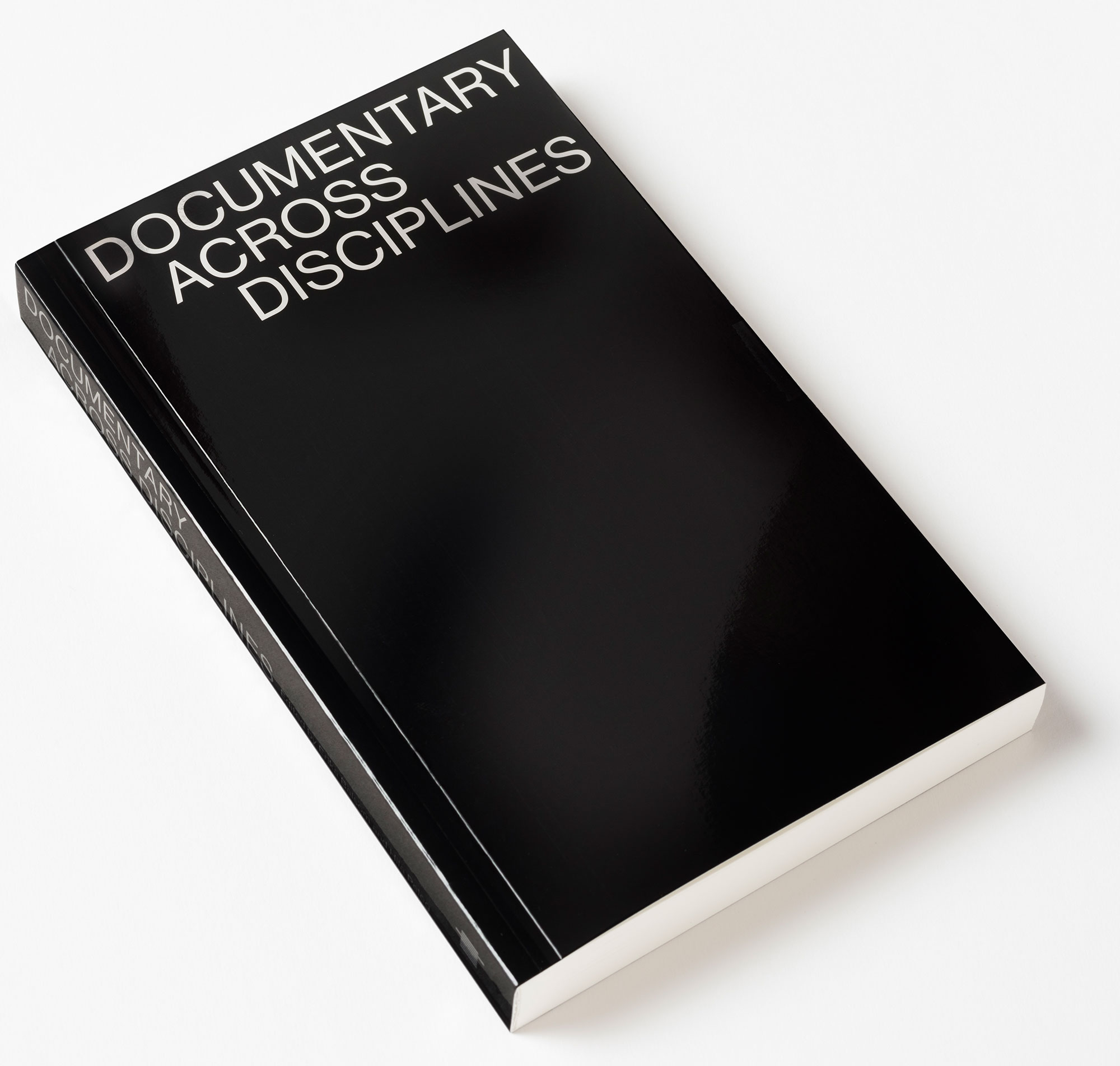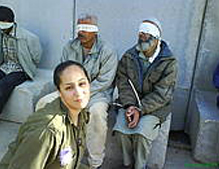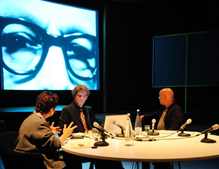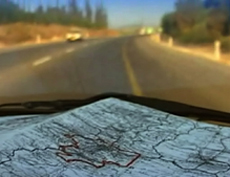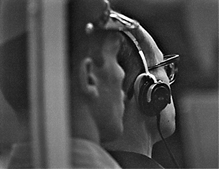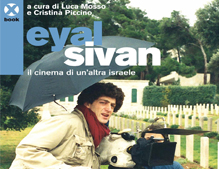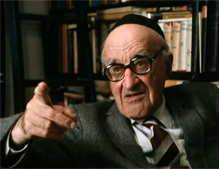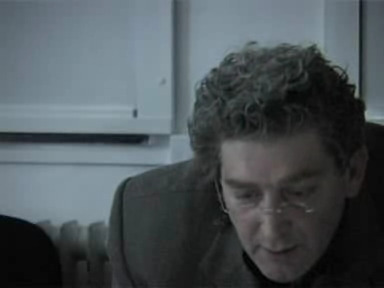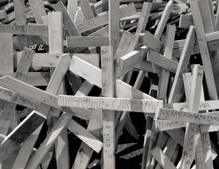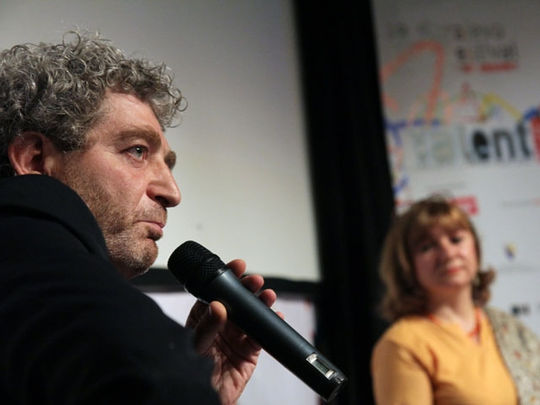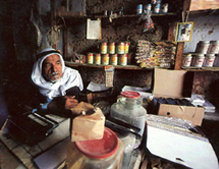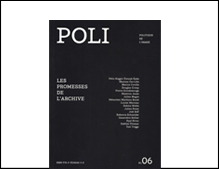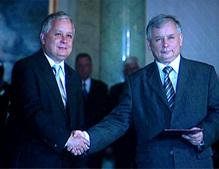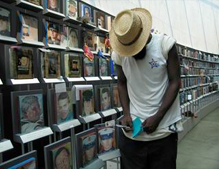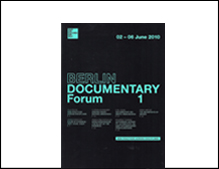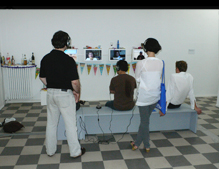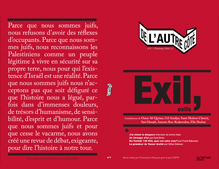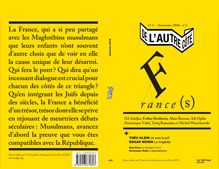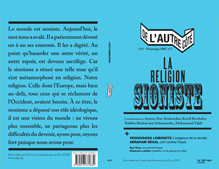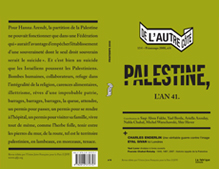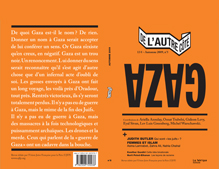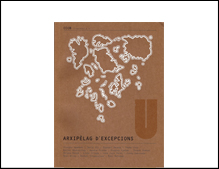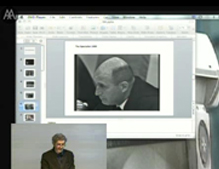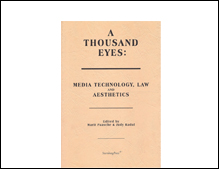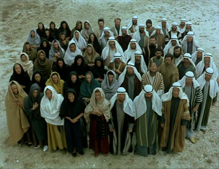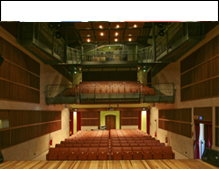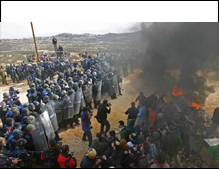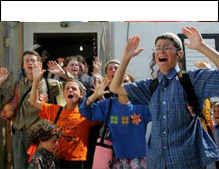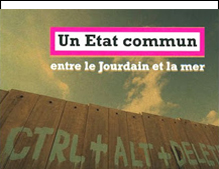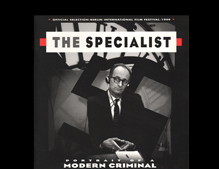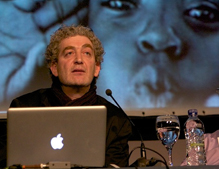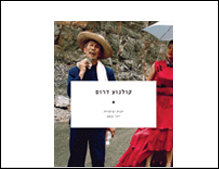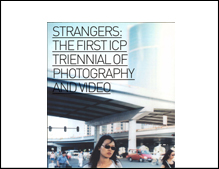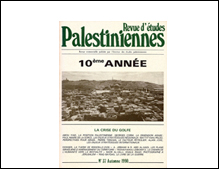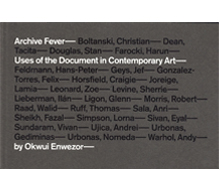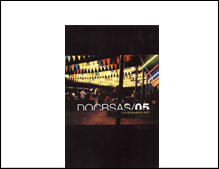-
Proposal for a visual media exhibition
with the participation of students of the Master of Film at the Dutch Film Academy, Amsterdam -
Get my films
Buy DVDs online at www.momento-films.com -
IZKOR
slaves of memory
Documentary film | 1990 | 97 min | color | 16mm | 4:3 | OV Hebrew ST -
Common Archive Palestine 1948
web based cross-reference archive and production platform
www.commonarchives.net/1948 - Project in progress - -
Montage Interdit [forbidden editing]
With professors Ella (Habiba) Shohat and Robert Stam / Berlin Documentary Forum 2 / Haus der Kulturen der Welt / June 2012 -
Route 181
fragments of a journay in Palestine-Israel
Documentary film co-directed with Michel Khleifi | 2003 | 272 min [4.5H] | color | video | 16:9 | OV Arabic, Hebrew ST
-
The Specialist
portrait of a modern criminal
Documentary film | 1999 | co-author Rony Brauman | 128 min | B/W | 4:3 | 35 mm | OV German, Hebrew ST -
Jaffa
the orange's clockwork
Documentary film | 2009 | 88 min | color & B/W | 16:9 | Digital video | OV Arabic, Hebrew, English, French ST
-
Montage Interdit
www.montageinterdit.net
Web-based documentary practice. A production tool, archive and distribution device | project in progress
-
Common State
potential conversation [1]
Documentary film | 2012 | 123 min | color | video | 16:9 split screen | OV Arabic, Hebrew ST -
Towards a common archive
testimonies by Zionist veterans of 1948 war in Palestine
Visual Media exhibition | Zochrot Gallery (Zochrot visual media lab) | Tel-Aviv | October 2012 - January 2013
-
I Love You All
Aus Liebe Zum Volk
Documentary film co-directed with Audrey Maurion | 2004 | 89 minutes | b/w & color | 35mm | OV German, French ST
News from the Future of Public Media IDFA, Ivens, Oranges and More
Review by Prof. Patricia Aufderheide (AUSOC)
If you want to take the pulse of documentaries as interventions in publiclife, the International Documentary Film Festival at Amsterdam(IDFA)—which just wound up on Sunday—is an excellent stop. The largestinternational documentary film festival in the world, it exhibits hundreds offilms, takes in thousands of international visitors, attracts passionateaudiences that pack theaters on a Sunday morning for impossibly obscureexperiences, and hosts a vigorous market. It focuses on documentary witha social agenda, rather than the burgeoning field of “factual entertainment.”Sure, you could take a boat ride on the canals, but there will always besomething more compelling, between the screenings, the exhibits ofexperimental digital multiplatform projects at DocLab, the panels anddiscussions, and the endless meet-and-greet parties.Documentaries at their best act as catalysts to conversation, as doors thatopen up new curiosities, as urgent calls to alarm. And so they oftenfunction as public media, connecting people through understanding ofsomething worth knowing and sharing. Their subject matter can betrivial—for instance, the Pennebakers! latest Kings of Pastry. Or it can beprofound—for instance, the subject of the top award-winner, Last TrainHome, which shows the human experience of globalization andindustrialization in the migrations of Chinese workers. Or the Special JuryAward-winning The Most Dangerous Man in America, about Daniel Ellsberg,the Defense Department analyst who leaked the “Pentagon Papers” to themedia. (Both these titles, by the way, had funding from the public televisionproduction service Independent Television Service. Look for Last TrainHome, as well as Good Fortune, about the contradictions of development inKenya, on P.O.V. The subject matter is only one aspect of their distinctivecharacter. They are human-scale movies, often the voice of one person.They talk to us with the personality of their makers. They engage usgratefully as people willing to listen to and engage with them.How does this kind of project translate into the ADHD online environment?If DocLab is any guide, with some difficulty. Cat Cizek!s Filmmaker-in-Residence project, sponsored by the Canadian National Film Board, is anexceptional example of an audio-visual project rooted in socialrelationships, and with interaction driven by those social relationships. Toomany project leaders, though, presume that communities will gatheraround what often is fascinating material, but material that will surelylanguish without the social connections that the online environmentdemands.Most of the films screening at IDFA were created out of a more oldfashioned,storytelling ethos, and for the more passive viewing experienceof the film screening. I wonder how they will fare, in a Facebook world. Outof the hundreds of films available, I saw a handful, and was glad I did. Ihope to find them later in theaters, on public TV!s Independent Lens orP.O.V., on Netflix or online, and maybe I will. IDFA itself just launched anonline TV channel where you can see some of the films from the fest.One I loved was Indonesia Calling: Joris Ivens in Australia. Indonesia Callingis also the title of a 1946 film by Joris Ivens, the peripatetic Dutchfilmmaker who as a fierce socialist made activist films in social strugglesaround the world. Ivens had been sent to Australia by the Dutchgovernment to take part in the Dutch East Indies propaganda service,which like the rest of the Dutch colonial apparatus was lodged in Australiaduring the Japanese occupation of what would become Indonesia. He wassupposed to document, with Allied victory, the Dutch installation of aprogressive regime transitioning to Indonesian independence. The Dutchwere already backpedaling on their commitment, though, and Ivens!colleagues, with their Australian conservative allies, discredited this leftwingfilmmaker. When Indonesian and Indian dockworkers discovered thatthey were loading munitions to arm a repressive returning Dutch regimethat would suppress independence, they went on strike. Ivens, kept fromresources and access by his conservative compatriots, quit his job andmade a film about the strike.Australian filmmaker John Hughes tells the improbable story of how Ivensmade this 17-minute film, which became part of the Indonesianindependence movement. (By the time a U.S.-backed coup brought in thevastly corrupt regime of Suharto, Ivens was off to other liberationstruggles.) To do it, he ends up providing a mini-biography of Joris Ivens, alegend in his own country and to doc folk but unknown to many manymore; a sketch of the geopolitics and independence history of the region;and a close-up study of how a film is made. All the stories are immenselyworth knowing.Ivens is a polarizing figure, because of his politics (sometimes Communistin the Russian style, sometimes Maoist in a Chinese mode). Hughesreturns Ivens! complexity to him, without excusing or justifying any of hisdecisions. He shows how Ivens made the film, which was reenactment—in this case, significantly after the fact. He notes thedifferences between how things happened and how Ivens restaged them.In one case, Ivens—with a skeleton cast, since most of the dockworkershad by that time left—re-enacts how a small flotilla of Indian dockworkerssurrounded a departing strike-breaking ship and convinced them, shoutingurgently in a variety of Indian languages, to stop working; the ship turnedaround. In the reenactment, it!s one boat, with a couple of non-Indiansspeaking English. It!s simpler than the reality, easier to understand, andincidentally more in accord with our notion of individual heroics, as well asbeing a pragmatic choice. It!s just not faithful to the way things happened.And then Hughes locates the drama that Ivens caught within the widerone. He reveals the internal, red-baiting politics (aided by J. Edgar Hoover,whose FBI was spying on Ivens while he was in the U.S.), which only gotworse and affected the lives of everyone who worked with Ivens. Heshowcases the unsuspected courage of the Australian government inbacking the Indonesian independence struggle against the interests ofAustralia!s traditional allies, the English, Americans and Dutch. He showshow the film was used, and why people in Indonesia thought it was soimportant. At the end, you also know that the filmmaker himself is an artistcommitted to making media that matters, and sophisticated in weighing theconsequences of storytelling choices.When I asked him why he made the film he said, “I really made it for a newgeneration of Australian filmmakers. I wanted them to see what was atstake for Ivens when he made this film, and what kind of difference itmade. And I wanted them to see that government agencies can subvert aswell as support filmmaking.” Hughes does indeed restore memory, but it!snot just for Australian filmmakers. This is also a story with global links. Itrecalls the intensely political moment of transition from colonial status toindependence, in a Cold War context. It is a story about institutionalpolitics, familiar to anyone who!s ever been institutionalized. And it!s astory about storytelling that matters. I hope Indonesia Calling getsdistribution everywhere documentary history is told. Hughes tells me he!llbe self-distributing an NTSC version shortly.For those interested in the realities of Australia and Southeast Asia, it wasa rich fest overall. One treasure was the 1995 classic Contact retells agripping story of contacting a remote group of Australian aboriginals, usingremarkable footage from the 1960s moment and re-enactments done inhigh humor by the aboriginals themselves. Strange Birds in Paradise is ahomely and uneven work with a compelling story, about the persecution ofthe inhabitants of West Papua/Irian Jaya by the Indonesian armedforces—whose officers also hold concessions for the area!s many naturalresources. The Papuans want independence, and the Indonesians wanttheir stuff.Another extraordinary viewing experience was Eyal Sivan!s Jaffa: TheOrange’s Clockwork. Sivan is an Israeli-born filmmaker and academic, whoproduces intensely thoughtful works. Like the title, the film might be just alittle too arch, but it!s an energizing experience at every level—political,aesthetic, intellectual. The film explores the meanings given to the Jaffaorange, as Israel developed. Once the product of an Arab seasidetown—Jaffa, the orange became a symbol of the energetic young Israelistate, which struggled to erase the memory of the Jaffa that was destroyedin 1948 and engulfed by Tel Aviv. The orange later became an imagewidely used by protesters of Israeli treatment of Palestinians (for instance,an orange as a grenade). Sivan asks viewers to look carefully and criticallyat propaganda film, advertisements, posters and branding images, probetheir meaning and—with the help of Palestinian, Israeli and internationalscholars—grasp the political context. I hope Jaffa gets a vigorous worldwidecirculation. It would be a boon to media literacy everywhere, as wellas a productive jog to better conversations about Middle East politics.One of IDFA!s delights is its welcoming of retrospective. IDFA invites itsselected filmmaker to choose ten favorites. Eyal Sivan selected amongothers a 1976 Godard film, Ici et Ailleurs. In it, Godard offers a pitilesscritique of an earlier film of his, a triumphalist propaganda film in support ofPalestinians. It was a healthy reminder that Godard in a self-critique is fullyas annoying as Godard in full-on propaganda mode. (Mother Dao, which Iloved, was another of Sivan!s choices, so Sivan!s choices balanced out forme.)Documentarians always complain about two things: lack of money, andlack of distribution for their work. At IDFA, both complaints were loud.Financing has become even harder with the recession. National publicbroadcasters are often both taking funding cuts and also sharpening thecommercial edge of their appeal. The money!s in high-drama reality shows,not in slow-foodish documentaries. All over Europe and the wealthierCommonwealth countries, documentary filmmakers have since the dawnof documentary depended upon their governments—often chafing aboutgovernmental restrictions and demands, but nonetheless dependent. Theharshly entrepreneurial environment in which U.S. filmmakers live issomething Europeans are still getting used to. Nonprofit partners don!tmake up the difference (the U.S. tax laws enabling the existence offoundations is not common), and using social media techniques to buildand groom a social and financing network for your film is largely unproven.The transition is daunting to many. Online distribution, while growing,doesn!t provide an adequate funding stream. The challenges of funding inevitably bring filmmakers back to the question of constructing networks of support, communities, constituencies. And that brings them back to the question of how to use the latest tools of social media to find, engage and activatethe people they want to become members of the public about the issues they so passionately investigate.

